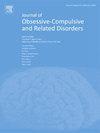Clinical characteristics of a treatment seeking sample of adults with misophonia: Onset, course, triggers, context, and comorbidity
IF 1.5
4区 医学
Q3 PSYCHIATRY
Journal of Obsessive-Compulsive and Related Disorders
Pub Date : 2024-10-01
DOI:10.1016/j.jocrd.2024.100915
引用次数: 0
Abstract
Misophonia is characterized by intense emotional reactions to specific repetitive sounds. The clinical characteristics and developmental course of misophonia remain underexplored, particularly in treatment-seeking adults. In this study, we characterized the onset, symptom progression, trigger noises, and psychiatric comorbidities associated with misophonia. Additionally, we investigated the relationships between these clinical attributes and the severity of self- and clinician-rated misophonia symptoms. The sample included 60 adults with misophonia enrolled in a randomized controlled trial. Most participants (79%) reported symptom onset in childhood and early adolescence, with symptoms often worsening over time. All participants reported being bothered by human produced sounds. However, responses to trigger noises vary based on the context surrounding the sound. Those who reported equivalent distress across misophonic triggers –regardless of the individual producing the sound—endorsed significantly higher self-reported misophonia symptoms. Approximately half of the sample met diagnostic criteria for another psychiatric condition, with attention-deficit hyperactivity disorder and generalized anxiety disorder being the most prevalent. These findings underscore the complexity of misophonia and highlight the importance of considering the individual clinical histories and contextual factors influencing reactions to misophonic sounds.
寻求治疗的成年失音症患者样本的临床特征:发病、病程、诱因、背景和合并症
失音症的特征是对特定的重复声音产生强烈的情绪反应。对误咽症的临床特征和发展过程,尤其是对寻求治疗的成年人的研究仍然不足。在这项研究中,我们对误咽症的发病、症状进展、诱发噪音和精神疾病合并症进行了描述。此外,我们还研究了这些临床特征与自我和临床医生评定的失音症状严重程度之间的关系。样本包括参加随机对照试验的 60 名患有失音症的成人。大多数参与者(79%)称症状在童年和青春期早期开始出现,症状通常会随着时间的推移而加重。所有参与者都表示受到人类发出的声音的困扰。然而,对诱发噪音的反应会因声音的环境而异。那些对不同声音触发器产生相同困扰的人--无论发出声音的是谁--自我报告的失音症状明显要高得多。大约一半的样本符合另一种精神疾病的诊断标准,其中以注意力缺陷多动障碍和广泛性焦虑症最为普遍。这些发现凸显了失音症的复杂性,并强调了考虑个人临床病史和影响对失音反应的背景因素的重要性。
本文章由计算机程序翻译,如有差异,请以英文原文为准。
求助全文
约1分钟内获得全文
求助全文
来源期刊
CiteScore
4.00
自引率
5.60%
发文量
46
审稿时长
47 days
期刊介绍:
Journal of Obsessive-Compulsive and Related Disorders (JOCRD) is an international journal that publishes high quality research and clinically-oriented articles dealing with all aspects of obsessive-compulsive disorder (OCD) and related conditions (OC spectrum disorders; e.g., trichotillomania, hoarding, body dysmorphic disorder). The journal invites studies of clinical and non-clinical (i.e., student) samples of all age groups from the fields of psychiatry, psychology, neuroscience, and other medical and health sciences. The journal''s broad focus encompasses classification, assessment, psychological and psychiatric treatment, prevention, psychopathology, neurobiology and genetics. Clinical reports (descriptions of innovative treatment methods) and book reviews on all aspects of OCD-related disorders will be considered, as will theoretical and review articles that make valuable contributions.
Suitable topics for manuscripts include:
-The boundaries of OCD and relationships with OC spectrum disorders
-Validation of assessments of obsessive-compulsive and related phenomena
-OCD symptoms in diverse social and cultural contexts
-Studies of neurobiological and genetic factors in OCD and related conditions
-Experimental and descriptive psychopathology and epidemiological studies
-Studies on relationships among cognitive and behavioral variables in OCD and related disorders
-Interpersonal aspects of OCD and related disorders
-Evaluation of psychological and psychiatric treatment and prevention programs, and predictors of outcome.

 求助内容:
求助内容: 应助结果提醒方式:
应助结果提醒方式:


